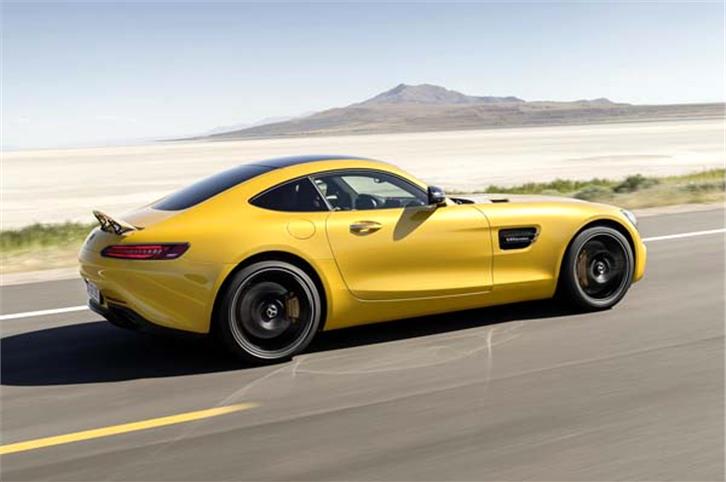It may not have the iconic gullwing doors or the raw power of its predecessor, but the AMG GT feels more refined and better engineered than the SLS.
What is it like?
The draw of the Mercedes-AMG GT begins the moment you reach for the door handle, step over its broad sill and slide into the fabulous two-seat cabin. There is an appealing individualism and contemporary look to the design of the interior, which is terrifically well organised and imparts a feeling of real quality. You sit very low on seats with loads of lateral support and generous electronic adjustment. The heavily structured dashboard features an 8.4-inch monitor and no less than six round ventilation units, while the beautiful multi-function flat-bottomed leather steering wheel adjusts for both rake and reach and is ideally placed in a near-vertical position.
A pair of dials and a colour display reside in a heavily hooded binnacle ahead of the driver. All of the major controls are grouped in a panel atop the high-mounted centre tunnel between the driver and passenger. Much of the switchgear is unique to the GT; the main buttons and dials are superbly crafted and nicely weighted in their operation. Other less impressive switches are housed out of view within the roof liner. They may share a common silhouette, various structural elements and driveline components, but on the road, the differences between the SLS and the new GT S are immediately apparent.
From the very first mile, the new Mercedes-AMG model feels a more rounded car than its predecessor, offering sharper step off qualities, terrific low-end tractability and superior gear shift quality along with added accuracy to the steering, and excellent low-speed manoeuvrability. All of this makes it a more gratifying car in everyday urban driving conditions. However, the ride, even in the softest of settings, is on the firm side. Up the pace on the motorway and you discover the core strength of the GT S: the sheer urge delivered by its engine. Despite giving away 2226cc in swept volume to the naturally aspirated unit it replaces, the new twin-turbocharged engine is quite fantastic, with a wonderfully linear nature and no discernible lag. It's terrifically smooth and flexible across the entire rev range, and comes with a willingness to pull hard all the way to the 7000rpm redline, as well as a tremendous NASCAR-like soundtrack when you’ve got it operating in anything but Controlled Efficiency mode, in which the exhaust flap is closed off to muffle its aural traits. This inherent potency of the engine is backed up by much improved qualities from the reworked double clutch transaxle gearbox. It now shifts with added determination, especially in Sport Plus and Race modes, where ratios are engaged with great purpose.


























Comments
Member Login
Personal Details
No comments yet. Be the first to comment.